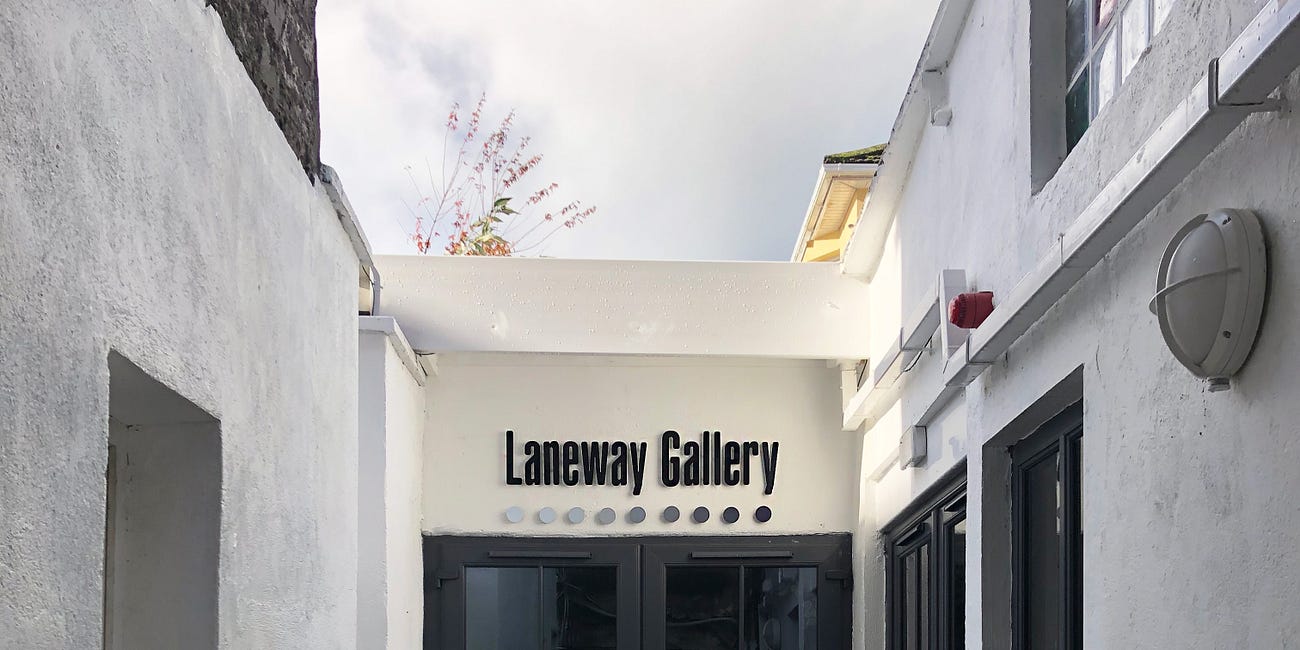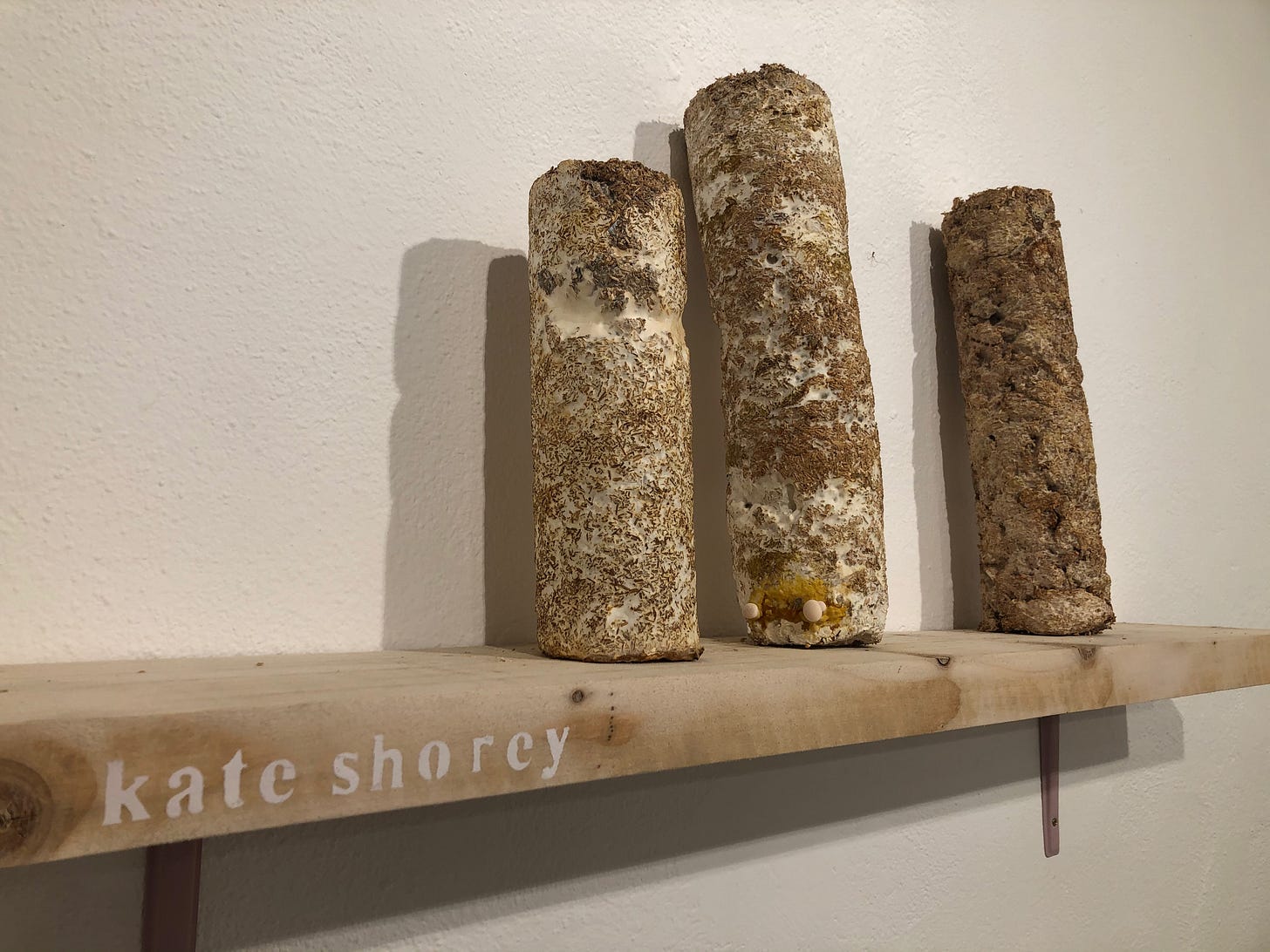Art that's meant to fade
An exhibition that challenges our view of art as permanent poses deep questions about the environmental impacts of the materials artists use.

“My body will be happily decomposing in the ground, but my work will be leaching chemicals into the environment? That’s pretty disturbing.”
Artist and curator Katerina Gribkoff is contemplating permanence, and how the materials that artists use can be environmentally destructive.
While there has been a growing awareness of the issue of carbon footprints in the art world in recent years, a challenge to the actual materials used by artists, involving as it does a re-evaluation of some of the ideas of permanence so imbued in their education, can be thornier.
A couple of years ago, I interviewed a sculptor who had produced a large work made from a variety of non-biodegradable, non-recyclable materials including polystyrene and plexiglass.
When I innocently asked what would happen to the sculpture at the end of its life, the response was blank, as though art were alchemical, as though we could no longer consider it the sum of its parts once it has been unveiled as art, as though art were somehow eternal and immutable.
How much of what we consider art ends up lying in the back of a storage unit or shed for years and years, or even in a wheelie bin as unclaimed clutter, a mass of plastics and paints and semi-toxic components?
Deep in the Anthropocene, can artists embrace impermanence as a feature of their work, cease struggling against the vanishing act that is Time to create artworks that are designed to degrade or be dismantled for circular use?

Katerina, originally from the US, who is in her final year of a PhD at the Burren College of Art in Ballyvaughan, Co Clare, exhibits an unease at the Ozymandias-like permanence of the physical artefacts of the art world.
“I come from a traditional fine art background and went to art school in New York and you’re taught to use archival materials, that things have to last forever,” she says. “That started to wear on me a bit: it’s disturbing to think of things lasting forever, long after I’m dead.”
Katerina and her colleague Phoebe Tohl are talking about Meant to Fade, the exhibition they have co-curated in Cork’s Laneway Gallery this summer: the show runs until July 1, so Tripe + Drisheen readers have just days left to explore the exhibition, which features the works of 20 artists working with ephemeral, frequently naturally derived materials.
It’s an eco-conscious exhibition, certainly, with a proliferation of biodegradable materials in use, and it’s also a thought-provoking one that ends up posing some quite fundamental questions about the nature, value and meaning of art as physical artefact.

Regurgitated starling pellets, mushroom mycelia, wine as paint
With work from so many artists in the exhibition, there are as many different approaches to materiality as there are contributors, and many of them are ingenious and surprising.
Dearbhla Ryan’s trio of rosaries made from gathered materials includes one made from tiny pinkish pellets regurgitated by starlings. They are changing colour over time, but this doesn’t dissolve the power of their tiny invocations to the natural world.
“I don’t think either Phoebe or I knew that starlings regurgitated pellets,” Katerina says with a laugh, “but Dearbhla does a lot of collecting things from the environment and is really focused, and can see these things that I never would have noticed before.”
Above the rosaries, Kate Shorey’s Monolithic Mycelium, made of discarded hemp inoculated with mushroom mycelium, is starting to bear fruit. When I visited, a spider was busily weaving his own delicate and impermanent artwork between two of its cylindrical forms.
Christine Prescott’s A Beckoning is a cell-like proliferation of markings in red wine on paper, made while the artist was coming to terms with a leukaemia diagnosis.
Catherine McDonald’s Memento Vita is a series of bowls pressed from salt: over time, as they absorb the moisture from the gallery and interact with the copper leaf dais on which they are placed, they are slowly collapsing.
Greenwashing art?
“Not every single work has material that will eventually disintegrate,” Phoebe Tohl points out. “There are plastics found from the sea in Idi Mitrani’s work, for example.”
“I do think that we as artists have to start thinking about how to use material that already exists too, that may not necessarily break down over time, but how to incorporate them in a way that gives them a new life.”
“In my own work, I move between natural materials and things like found plastics, looking for ways to use these materials in a way that honours them and gives them new meaning.”
Phoebe believes that above all else, it’s time for artists to be honest about the materials they are using, about the environmental impacts of art itself.
“In my experience of working with professional artists, people are trying to hide and are not necessarily being fully honest about being green or sustainable, in order to have a certain image,” she says. “And I think we’re at a place where we can’t really afford to do that any more.”
Phoebe, who is from the West Coast of the US, is in her final year of a Masters programme at the Burren College of Art: it was here that she met Katerina and the pair hit it off.
Katerina and Phoebe learned there was an open call for a new Cork gallery, the Laneway Gallery in Shandon, which Tripe + Drisheen featured shortly after its opening last year:
Meet the owner of Cork's newest gallery
At the top of Shandon Street, a new sign has popped up outside the tiny laneway that once housed a chaotic secondhand furniture shop known as Trotter’s. In the Trotter’s days, windows and doors and windowframes crammed the lane and spilled out onto the street; in 2019, the premises was put up for sale and it sold…
Applying for the open call, the curators found themselves with 75 artists interested in participating in Meant to Fade, a sign, they agree, of the growing awareness amongst artists of the necessity of tackling the environmental considerations of materiality seriously.
To Katerina, this concern is far more prevalent in Ireland: when she started to study in the Burren College of Art, their Art and Ecology programme was the only one she could find of its kind. Just years later, and other art colleges around the world are adopting similar courses.
“I think a lot more artists are thinking about the legacy of their work, and I notice it especially in Ireland,” she says. “Maybe because people in Ireland have a strong connection to land and place and the environment.”
A garden of colours
As well as co-curating Meant to Fade, Katerina is also exhibiting: she has been making a series of quilts from natural dyes that she has grown in her own dye garden as part of her PhD research.
“I’m growing plants that sound a bit unusual, but a lot of them are native to Europe and were historically grown for use as dyes in Ireland, England and the rest of Europe,” Katerina says. “They include, coreopsis, woad, madder, and then I’m growing a little bit of indigo this year, as well as other flowers I haven’t tried before. I dye cotton that I get at charity shops and then use that to make quilts.”
For Phoebe, not exhibiting her own work this time round gave her the freedom to embark on a hands-on curation process that involved everything from creating felt mats to display some artworks, to foraging nettles for woodsman for shelves and benches.
“To come up with unique, non-traditional display methods was really important,” she says. “I come from a production background, so once I get into the space I start feeling very inspired.”
The future of impermanence
For both artists, Meant to Fade feels like the beginning of something: an annual show perhaps, or a festival.
“Just with the number of submissions we had, it’s clear there’s a large number of artists working within this theme and it gives me hope that there could be an annual Meant to Fade,” Phoebe says. “I would love to see that happen. We’ve talked about ways to keep it going and it would be a shame to stop here.”
To that end, a book, also called Meant to Fade, is set to be launched at the closing event of the exhibition: it features some work by the exhibiting artists, as well as poetry and essays relating to the theme of impermanence.
Meant to Fade runs until July 1 at the Laneway Gallery on Shandon Street, Cork City with a closing public event on Saturday, July 1 from 5pm until 7pm.
"Ulysses is not a hard read if you concentrate on the food."
On the face of it, Bloomsday is a Dublin event. It’s that one day in the year when Ulysses enthusiasts get to cosplay with glee on the streets of the capital. However, Bloomsday, a celebration of Joyce's complex masterpiece written over 100 years ago, takes place wherever Joyce fans reside. And that includes …








I visited the Meant to Fade exhibition twice and was amazed at the beauty, diversity and scope of it! This exhibition really resonated with me and I was delighted to see artists engaged in such work as I work as a visual artist and a year or so ago I started using my own homemade inks made from plants in my garden (except avocado of course). I currently have a solo exhibition at MTU, Cork School of Music, Union Quay, Cork T12E9HY called By nature which ends next week Tuesday 4th July. All welcome to have a look and please leave a comment. Thank you.